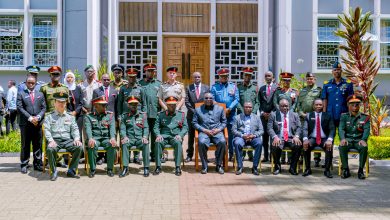Rukwa RCC endorses proposal to split Kwela constituency for better service delivery

RUKWA: THE Rukwa Regional Consultative Committee (RCC) has approved a proposal to divide Kwela constituency into two separate electoral districts in a bid to enhance service delivery for the respective residents.
The extraordinary RCC meeting, held over the weekend in Sumbawanga municipality, was chaired by Regional Commissioner Mr Makongoro Nyerere.
The deadline for submitting the endorsed proposal to the Independent National Electoral Commission (INEC) is set for March 26, 2025.
If approved by INEC, the proposal aims to bring essential social services closer to the people, improving their access to government resources and services.
Presenting the proposal to the RCC meeting, Rukwa’s Acting Assistant Administrative Secretary for Planning and Coordination, Mr James Kapenulo explained that the decision was based on several factors, including economic conditions, population density, the availability of social services such as schools and health facilities and the accessibility of communication infrastructure.
“The decision to divide Kwela constituency was made after careful consideration of factors that balance economic growth and service delivery across the two new constituencies,” Mr Kapenulo stated.
The proposed division will create two constituencies: Kwela at Upper Ufipa and Mtowisa along the rift valley of the Lake Rukwa basin, each with distinct geographic and demographic features.
ALSO READ: Council inks plan to split Dodoma Urban constituency
Kwela Constituency will cover an area of 3,991 square kilometers and serve a population of 207, 343 people. It will consist of two divisions, 14 wards, 49 villages, 271 areas, 58 primary schools and 18 secondary schools.
Mtowisa constituency, on the other hand, will span 4,879 square kilometers and include two divisions, 13 wards, 65 villages, 223 areas, 59 primary schools, 13 secondary schools and a public hospital.
Mr Kapenulo further explained that the current structure of Kwela constituency, with its numerous wards and villages, has made it difficult for government services to effectively reach every corner of the area.





